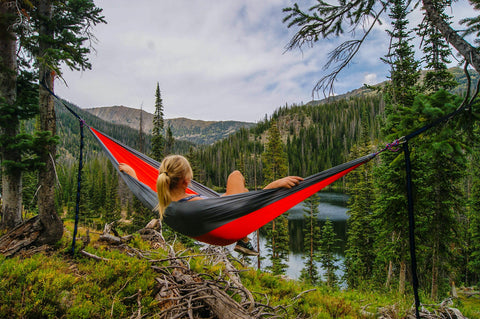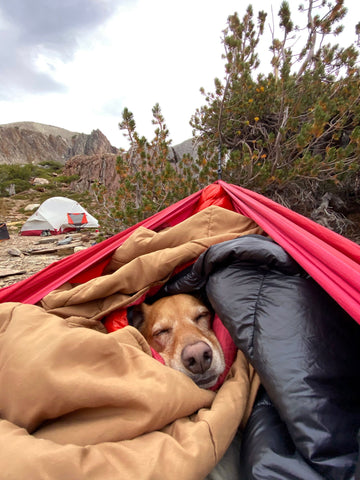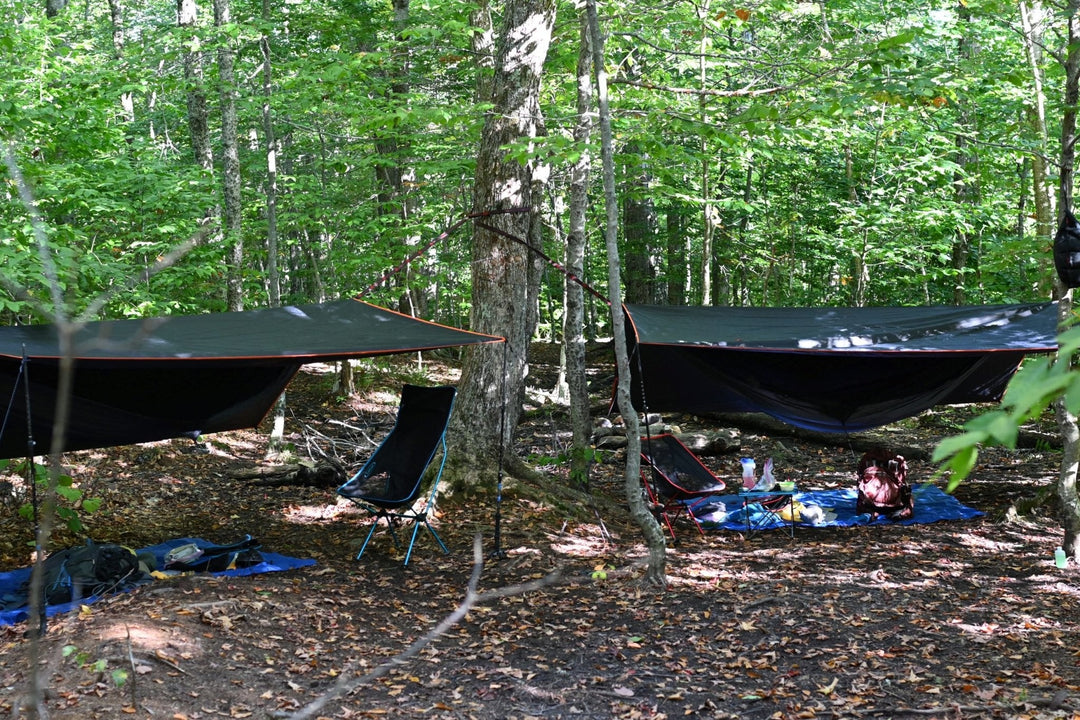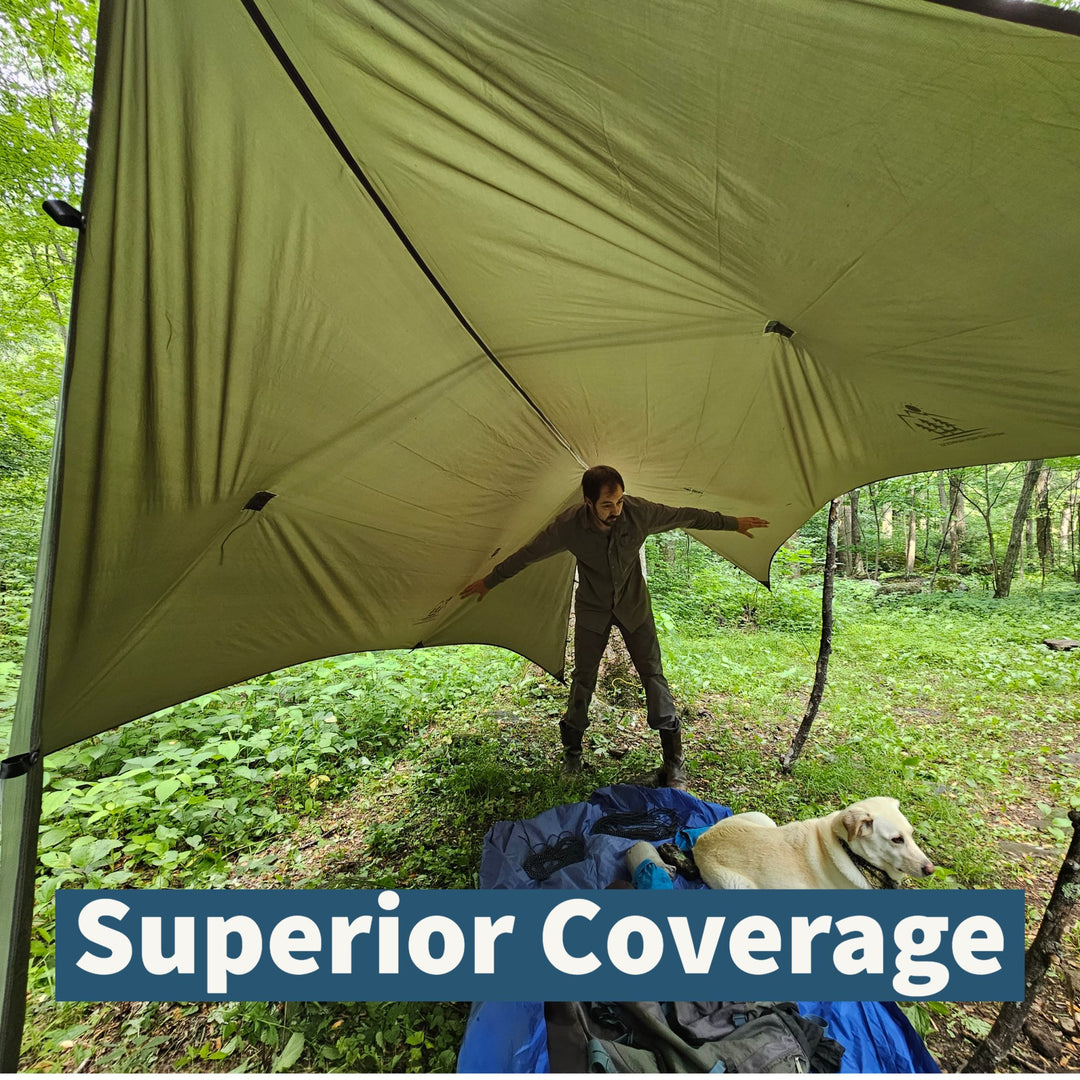What is Hammock Camping?
Unlocking the World of Hammock Camping: A Comprehensive Guide
When you think of a hammock, what comes to mind? Perhaps you picture the classic, rope-woven hammock that's perfect for lazy afternoon naps. But what if we told you that hammocks have evolved far beyond this iconic image? Welcome to the fascinating world of hammock camping, a realm where relaxation meets adventure.

Traditional Hammock
The Evolution of Hammock Camping
Before we delve into the reasons why hammock camping is gaining popularity among outdoor enthusiasts, let's address a common misconception. Traditional hammocks, while delightful for brief respites, aren't suitable for overnight camping. Those distinctive rope imprints on your skin and the lack of insulation make them impractical for anything more than a nap in the shade.
So, what sets hammock camping apart? It all starts with the materials. Modern camping hammocks are typically crafted from lightweight and durable materials, often parachute nylon. This material strikes a balance between strength and breathability, making it ideal for extended outdoor stays.
The most common type of camping hammock is the gathered end hammock. It features a channel sewn into each end or is tied together with a whip finish. This design allows for a comfortable diagonal sleeping position, essential for a good night's sleep in the great outdoors.

The Basics of Hammock Camping
Now that we've set the record straight on modern hammocks let's explore the fundamentals of hammock camping. To start, a hammock requires two key elements: suspension and anchors. While we'll save an in-depth discussion of suspension systems for another day, it's essential to understand the basics.
Your suspension system involves tree straps and a mechanism to attach them to your hammock. As for anchors, you'll need two sturdy trees, approximately 15 feet apart. However, selecting suitable anchor trees requires careful consideration. Never hang your hammock from anything that isn't load-bearing or designed to withstand lateral loads.
Moreover, ensure that your anchor trees have a minimum diameter of six inches and are in good health. It's crucial to inspect trees for any potential hazards, such as widow makers or dead branches, before setting up camp.
The Advantages of Hammock Camping
Now that you have a grasp of the essentials, you might be wondering, "Why should I choose hammock camping over the traditional tent camping experience?" Let's break it down:
1. Superior Sleep Quality: When you're deep in the wilderness, a restful and rejuvenating sleep is essential. Hammock camping offers an unparalleled sleeping experience. Forget about hunting for level ground or lugging around bulky sleeping pads and cots. All you need is a comfortable hammock, provided the weather is mild. With hammock camping, you'll wake up refreshed without any discomfort from uneven terrain or unexpected rocks.
2. Minimal Environmental Impact: Responsible outdoor enthusiasts aim to leave as little impact on nature as possible. Hammock camping is an eco-friendly choice when done correctly. Unlike tents, hammocks won't compress ground vegetation thanks to tent footprints. The only significant impact you'll make is on the trees themselves, provided you use appropriate tree straps. With the right gear and practices, you won't harm the cambium layer of the trees, ensuring a minimal footprint.
3. Weight Savings: Say goodbye to heavy tents with poles and additional shelter materials. Hammocks tend to be a lighter sleep system, making them an excellent choice for backpackers and hikers looking to shed pack weight. Although there are lightweight single-person tents available, they still require sleeping gear, adding extra pounds to your load.
4. Pest Protection: While no camping experience is entirely free of insects, hammock camping significantly reduces your exposure. Elevating yourself off the ground makes it harder for bugs to reach you. When you pair your hammock with a bug net, you're all set to enjoy a peaceful night's sleep without the buzzing and biting.

In Conclusion
In conclusion, hammock camping offers an exciting alternative to traditional tent camping. If you're considering making the switch, explore our range of Hammock and Tarp Bundles. These bundles contain everything you need to embark on your hammock camping adventure. Plus, for every bundle purchased, we contribute to the planting of two trees in a National Forest.
Prepare to elevate your camping experience by embracing the wonders of hammock camping. With its myriad benefits, it's a choice that combines comfort, sustainability, and a profound connection with nature. So, why wait? Get ready to embark on your next adventure. Until next time… Happy Hammocking!





Going through this article makes me think of my cousin who plans to get some small hammocks for her front lawn. I didn’t even know that hammock camping is a thing and that it’s easier to pack. Maybe she should consider this option when making some purchases later. https://www.majorcollectables.com/outdoor/patio-furniture/hammocks.html
Leave a comment